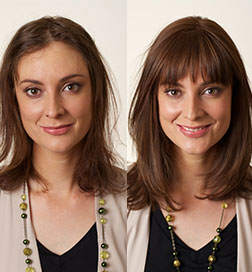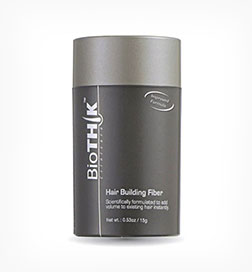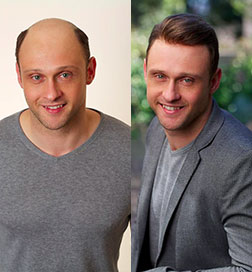The average human head has around 100,000 hair follicles, and most of us shed about 100 hairs every day. The hairs we lose of course are replaced with new ones of the same density – for a while at least.
As we age however, it’s often a different matter. Hair follicles tend to become smaller, making any new hair that grows very fine and short, leading to what is known as ‘patterned hair loss’ in many of us.
This phenomenon affects both genders – although the pattern is different for each. Baldness is very common in men, and is usually genetic. It generally follows the pattern of hair recession at the temples, and baldness on top of the head.
When it comes to hair loss in women, the pattern is different, involving more of a scattered thinning of the hair, with true baldness only occurring in about 5% of cases. According to the Better Health Channel, about 20% of women develop a moderate to severe loss of hair as they age.
So while becoming bald is more common in men, it does also happen in women, and in most cases of hair loss the pattern differs between the genders.
What causes hair loss?
In some cases, hair loss can occur in an individual due to emotional stress or trauma, illness, medications (e.g. chemotherapy) or malnutrition. Some women also experience hair loss or thinning during or after pregnancy.
In what is considered the more ‘normal’ type of hair loss however, the major contributing factors are age, genetics and hormones (predominantly androgens). This type of hair loss is not generally something you can prevent with special diets or potions, or by avoiding hair washing or the wearing of hats!
However, that does not mean you should just put up with it. These days there are some excellent and very effective treatments available for hair loss – particularly if they are applied as soon as the problem is identified.
What can be done about hair loss?
Treatments for hair loss include over-the-counter and prescription medications. For those who would prefer to avoid meds, along with their potential side-effects, the options include keratin hair thickeners, laser hair therapy to stimulate regrowth, hair extensions to create length and volume, hair grafting, and surgical transplants. Natural-hair wigs are another option – especially where a quick solution is needed, or for severe hair or baldness.
If you think you may be suffering hair thinning or loss, then the first step would be to get a professional consultation. At Transitions, we offer a free personalised consultation for new clients – get in contact today to discuss an appointment.




